Weeds crop up in many places, especially where the soil has been disturbed. Any gardener can attest to that. Among the weeds that appear along roads and in fields are several members of the mustard family, such as Field Pennycress and Field Peppergrass.
Field Pennycress, Thlaspi arvense, an alien to America, can be found in dry, cleared woods, in waste areas, at the roadside and in fields. Places where the soil has been disturbed are likely habitats for this foot and a half tall weed.
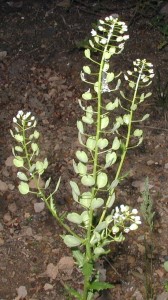
These plants get started early enough that they can complete their life cycle before the end of Spring. Basal rosettes will overwinter from the previous autumn, which makes this plant a biennial. Seeds are developed as early as May, but individual plants can be found growing and producing seeds throughout the growing season.
Seed pods are flat, circular “pennies” with a definite notch at the top. This notch differentiates field pennycress from other similar seed-producing mustards.
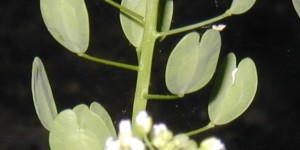
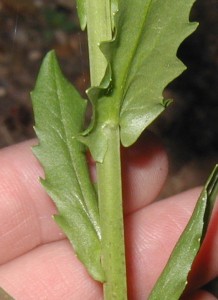
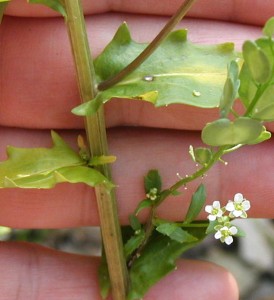
As the seed pods dry out the seeds can be seen through the thinning pods, especially when held up to the light.
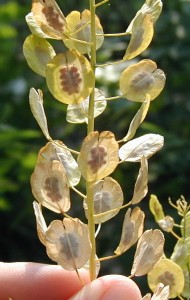
This one small plant produced a half-teaspoon of seeds. As far as seed production goes, I’m not sure if that’s a lot from just one plant. Collecting the seeds from two plants would make a teaspoon of seeds, six plants for a tablespoon, and 18 plants for a quarter of a cup.
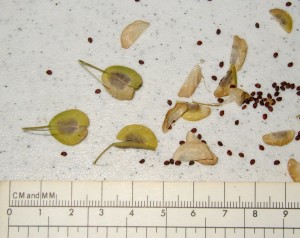
The seeds taste like a sharp mustard or peppery flavor. If you could collect a quantity of them, they could be crushed to use in a spicy homemade mustard. Or the seeds could be used in a spice grinder as a poor gal’s pepper. Or even try cooking with it whole, say in potato salad, substituting field pennycress seeds for mustard seed, or dropping some seeds into a vegetable stir-fry to add a little spicy flavor.
If we gave out awards here at WildeHerb one would certainly be handed to the folks at prodigalsun, where they are investigating the potential of field pennycress as a commercial seed crop for the production of biodiesel. Check out their resources page for more info on the possibilities of using these weed seeds commercially.
We champion anyone who sees value in our natural resources. Wouldn’t it be great to develop a good-for-nothing weed into an energy source? Bravo!
We found a crop of dried pennycress in our backyard a couple of months ago. We didn’t know what its name was at the time; we just thought that the dried stalks were lovely and brought them indoors for display. Ever since, we have been trying to figure out what the name of the plant is. I’m so glad we now have a name for this plant. And I’m really excited that the huge stand of “weeds” growing on our hugel is this year’s crop! Can’t wait to taste the seeds. A poor gal’s mustard sounds awesome!
Cool beans, Kate!
Let us know if you try the mustard and how you like it!
I’m trying to buy pennycress seed but I can’t find it anywhere . Do you have any suggestions ?
Hi Joe!
At this time I don’t know how to help you other than suggesting to look around the edges of fallow or agricultural fields for the plants that might still carry seeds. Pennycress may still be standing but in November I really couldn’t say if you’ll find it.
I am curious…are you going to plant some for personal (tasting?) reasons or do you need a lot of seeds?